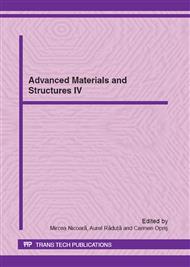p.31
p.37
p.41
p.46
p.52
p.59
p.65
p.70
p.76
Structural Analysis of PM Biocomposites Based on Hydroxyapatite Nanopowders Elaborated by Spark Plasma Sintering Route
Abstract:
The objective of this research is the development of a detailed structural analysis of biocomposites with ceramic matrix of hydroxyapatite (Hap) reinforced by titanium (Ti), elaborated by powder metallurgy technology. Nanometric Hap powders (<200nm) 75% wt and micrometric Ti powders (<150μm) are homogenized in a high energy ball mill Pulverisette 6. Spark plasma sintering (SPS) is the sintering route able to lead to nanostructured sintered samples when nanopowders are used as raw material. The SPS parameters are: the sintering temperature, T=(1000-1100)°C and the maintaining time, t=(10-20) minutes in vacuum. The influence of the sintering parameters on the composites structures is monitored using the optical microscopy (OM), electronic microscopy (SEM) and the X-Ray diffraction (XRD).
Info:
Periodical:
Pages:
52-58
Citation:
Online since:
May 2012
Authors:
Price:
Сopyright:
© 2012 Trans Tech Publications Ltd. All Rights Reserved
Share:
Citation:


